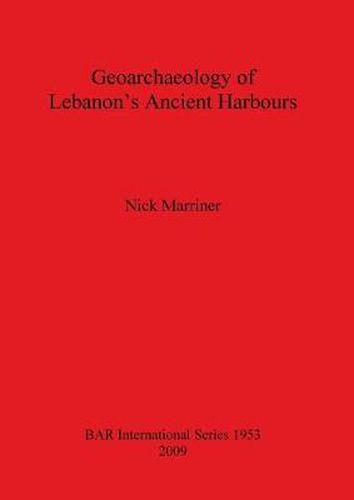Geoarchaeology of Lebanon's Ancient Harbours
Nick Marriner

Geoarchaeology of Lebanon’s Ancient Harbours
Nick Marriner
This title is printed to order. This book may have been self-published. If so, we cannot guarantee the quality of the content. In the main most books will have gone through the editing process however some may not. We therefore suggest that you be aware of this before ordering this book. If in doubt check either the author or publisher’s details as we are unable to accept any returns unless they are faulty. Please contact us if you have any questions.
Beirut, Sidon and Tyre have been occupied by human societies since the third millennium BC. The sites grew up around easily defendable promontories, for Beirut and Sidon, and an offshore island, as in the case of Tyre. All three possessed natural low energy basins that could be exploited as anchorage havens with little or no need for human artificialisation. In spite of their former maritime glories, however, the evolution of these three important Phoenician citystates has remained largely enigmatic. Chapter 1: Although innumerable studies have addressed the various aspects of ancient harbour geoarchaeology, there is no single monograph that treats the subject in its entirety. The aim of this first chapter is therefore to comprehensively review the present literature, and set ancient harbour geoscience within the wider context of Mediterranean coastal archaeology Chapter 2: The most pronounced coastal changes of all three sites have been observed at Tyre and this chapter analyses the role of various natural and anthropogenic forcings to reconstruct the Holocene accretion and progradation of Tyre’s ‘tombolo’, a peculiar sand isthmus linking the former offshore bastion to the continent. Chapter 3: The exact location of Tyre’s ancient anchorages has been a source of archaeological speculation since the sixteenth century and this chapter reviews this earlier literature before moving on to precisely relocate the ancient northern harbour, the city’s principal transport hub during antiquity, and its phases of evolution. Chapter 4: At Sidon, coastal stratigraphy has been used to reconstruct where, when and how the city’s ancient anchorages evolved. During the Bronze Age, the city’s southern bay, or ‘Crique Ronde’. Chapter 5: At Beirut, redevelopment of the central business district during the 1990s exposed great tracts of the city’s archaeology. Often dubbed as the ‘largest archaeological dig in the world’ the author and his team were called upon to link the historical data with the coastal stratigraphy and reconstruct the ancient harbour’s history. Chapter 6 draws together the data from all three sites to propose a general model of Phoenician harbour evolution since the Bronze Age.
This item is not currently in-stock. It can be ordered online and is expected to ship in 7-14 days
Our stock data is updated periodically, and availability may change throughout the day for in-demand items. Please call the relevant shop for the most current stock information. Prices are subject to change without notice.
Sign in or become a Readings Member to add this title to a wishlist.

